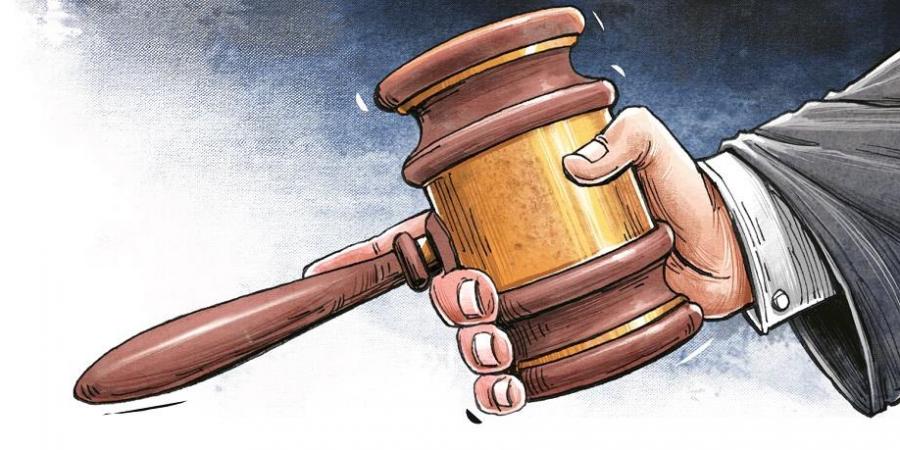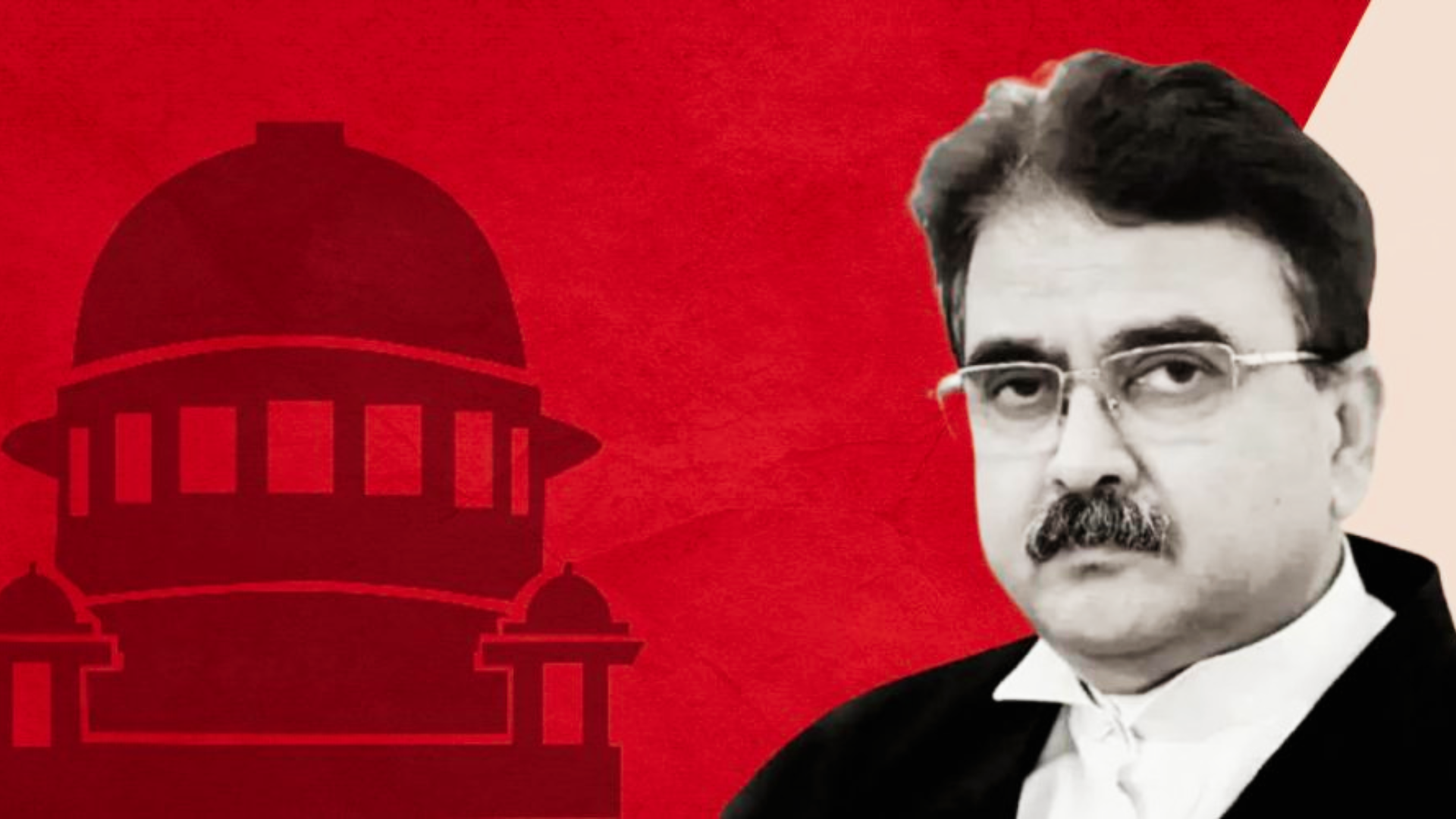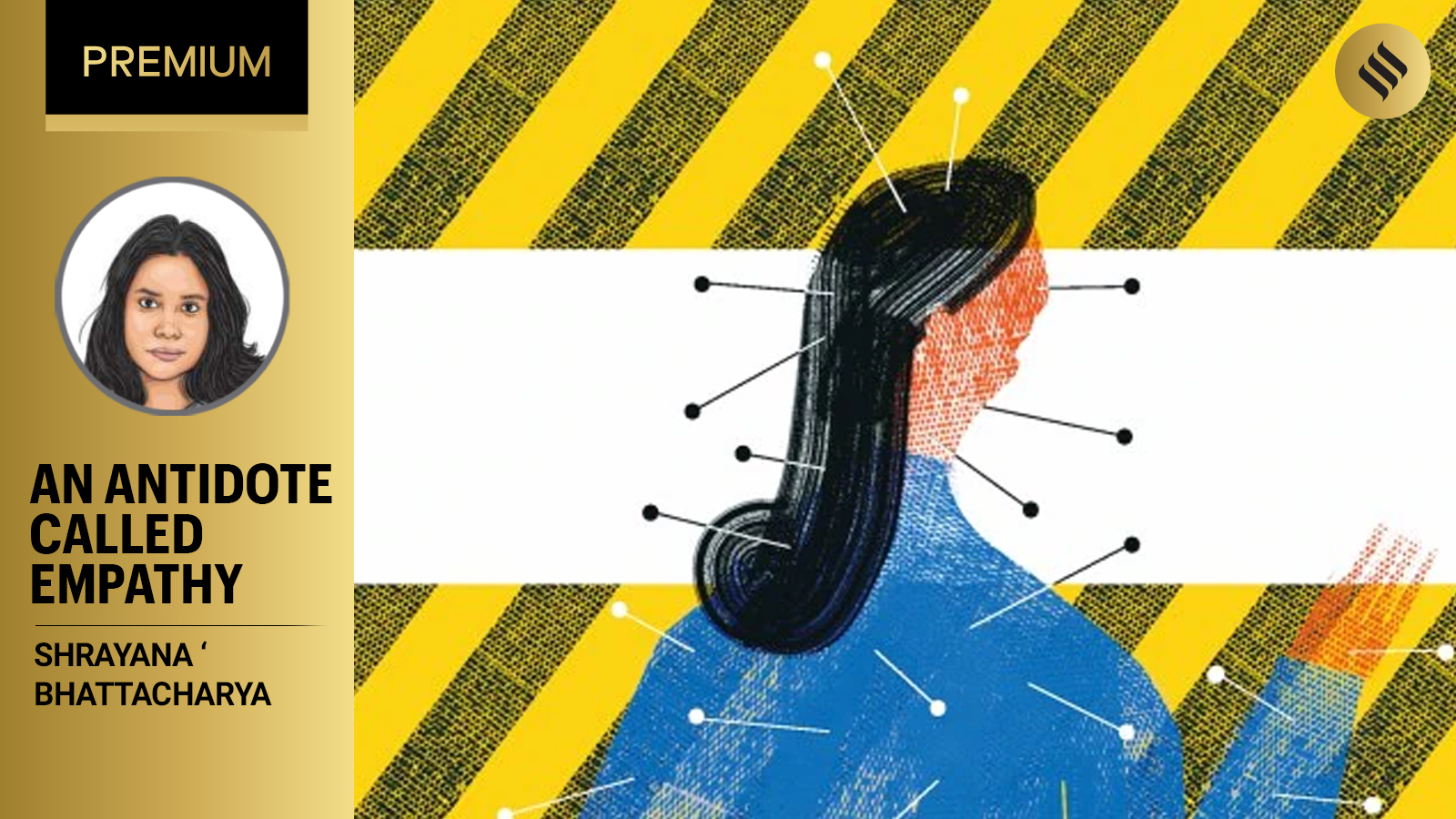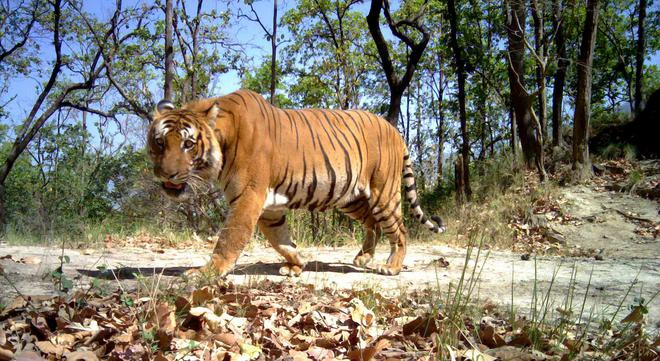Why in News?
- The Supreme Court has slammed the political-bureaucrat nexus over illegal construction and felling of trees at the Jim Corbett National Park in Uttarakhand, saying public trust had been thrown into the “waste bin”.
What’s in Today’s Article?
- About Jim Corbett National Park (Flora, Fauna, Rivers Associated, Key Facts, etc.)
- News Summary (Court’s Observation, Core Zone, Buffer Zone)
Jim Corbett National Park:
- Jim Corbett national park is located in Nainital district of Uttarakhand.
- Flora:
- Sal, Semal, Kharpat, Sissoo, Khair, Dhak, Khingan, Bakli, Bel, Ber, Bamboo, Khingam, Jamun, Kanju, Rohini and Pula.
- Sal, Khair and Sissoo are the most visible trees found in Corbett.
- Fauna:
- Tiger, Leopard, Elephant, Chital Deer, Sambar Deer, Hogg Deer, Barking Deer, Wild Boar, Langur, Wild pig, Rhesus Monkey, Jackal, Rabbit, Yellow Throated Martin, Otters.
- Reptiles such as Crocodile, Gharial, King Cobra, Common Krait, Cobra, Russel Viper, Rock Python, and Monitor Lizard are also found.
- Rivers Associated:
- The eastern periphery of Corbett National Park is entirely fed by the Kosi River.
- The Ramganga River (West) along with its significant tributaries Sonanadi, Palain and Mandal forms the prominent hydrological resource for the Corbett.
- Key Facts:
- It is India’s oldest national park (1935).
- It was named Hailey National Park after its founder Sir Malcolm Hailey.
- In 1956, in honour of Jim Corbett, who took the initiative for wildlife preservation in India, the Indian Government renamed it as Corbett National Park.
- It has the highest population of tigers in India.
News Summary:
- In 2023, alleged illegal buildings and waterbodies were being created. The issue was brought before the court through a batch of applications.
- The petitioners tried highlighting the violation of environmental norms and the encroachment into core wildlife habitats.
- During the proceedings, the petitioners presented evidence of unauthorised constructions within the national park.
- The court was shown photographs depicting concrete and iron enclosures purportedly meant for a ‘safari’ experience.
- The court was also informed that a significant number of trees, over 6,000, had been cut down in the national park under the guise of safari development.
Supreme Court’s Observation:
- The Court has raised questions about the necessity of creating such facilities within natural forest environments, particularly in areas designated for the protection of endangered species like tigers.
- The Supreme Court has directed the Government to constitute a committee to recommend whether tiger safaris should be permitted in the buffer or fringe areas.
- Also, what guidelines should be promulgated for establishing such safaris, if permitted.
- The Court also took a stern view of the illegal constructions and rampant felling of trees in Uttarakhand’s Corbett National Park.
About Core Areas and Buffer Areas in Tiger Reserves:
- According to the Wild Life (Protection) Amendment Act of 2006, a Tiger Reserve must have a core or critical habitat and a buffer zone peripheral to it.
- The Core areas have the legal status of a National Park or a Sanctuary.
- The Buffer or peripheral areas are a mix of forest and non-forest land, managed as a multiple-use area.
- The buffer area further, absorbs the “shock” of poaching pressure on populations of tiger and other wild animals.
Centre considers Article 371-like shield for Ladakh

Why in news?
- In a meeting with representatives from Ladakh, Union Home Minister offered to extend Article 371-like protections to the region.
- The Minister assured the representatives that their concerns related to jobs, land, and culture would be taken care of.
- However, he said that the Centre cannot bestow statehood on the Union Territory nor guarantee its inclusion under the Sixth Schedule.
- Instead, the government is considering giving Ladakh special provisions under Article 371 of the Constitution.
- Special provisions under Article 371 would allow protections to be extended to the local population of Ladakh, while stopping short of the widespread autonomy that is provided to ADCs and ARCs under the Sixth Schedule.
Background
- Following the repeal of Article 370 in August 2019 and the subsequent enactment of the Jammu and Kashmir Reorganisation Act, 2019, Ladakh has been recognised as a separate UT without legislature.
- UTs like New Delhi and Pondicherry have their own Legislative Assemblies.
- However, various organisations like the ABL and the KDA have demanded that Ladakh be included under the Sixth Schedule.
- This Schedule contains provisions regarding the administration of tribal areas in the states of Assam, Meghalaya, Tripura and Mizoram.
What’s in today’s article?
- Sixth Schedule of the Constitution
- Article 371
Sixth Schedule of the Constitution
- About
- The Sixth Schedule gives tribal communities of NE states considerable autonomy within a larger administrative or political structure.
- Sixth Schedule was adopted under Article 244 of the Constitution.
- This schedule deals with the provisions for formation of autonomous administrative divisions within a state.
- Inclusion under sixth schedule
- It allows a region to create Autonomous District and Regional Councils (ADCs and ARCs) — elected bodies with the power to administrate tribal areas.
- This would include the power to make laws on subjects such as forest management, agriculture, administration of villages and towns, inheritance, marriage, divorce and social customs.
- A majority of the population in Ladakh belongs to Scheduled Tribes.
- The ADCs and ARCs may also:
- constitute village councils or courts to decide disputes between parties from Scheduled Tribes, and
- appoint officers to oversee the administration of the laws they enact.
- In cases where the offences are punishable with death or more than five years of imprisonment, the Governor of the state can confer upon the ADCs and ARCs the power to try them under the country’s criminal and civil laws.
- The Schedule also gives ARCs and ADCs the power to
- collect land revenue, impose taxes, regulate money lending and trading,
- collect royalties from licences or leases for the extraction of minerals in their areas, and
- establish public facilities such as schools, markets, and roads.
- Current status
- Sixth Schedule of Indian Constitution provides a list of ten tribal areas in Assam (3), Meghalaya (3), Tripura (1) and Mizoram (3).
- Each of these tribal areas constitutes an autonomous district. Each autonomous district has an Autonomous District Council (ADC).
Article 371 of the Indian Constitution
- About
- Article 371, under part XXI of the Indian Constitution, grants some special provisions to certain states.
- It has been part of the Constitution since 26 January, 1950.
- However, Articles 371(A-J) were brought in via amendments through Article 368.
- Applicability
- Article 371 applies to a dozen states including six in the North East.
- The states are Maharashtra, Andhra Pradesh, Gujarat, Telangana, Sikkim, Mizoram, Arunachal Pradesh, Assam, Nagaland, Goa, Manipur and Karnataka.
- Article 371 stood alone, requiring the creation of development boards in Maharashtra and Gujarat for certain regions in order to assess their overall development and the need for government expenditure.
- Article 371-A
- It contains provisions related to Nagaland. Parliament cannot enact laws that affect the social, religious, or customary legal practices of Nagas.
- Article 371-B
- 371B, which deals with Assam, was brought in in 1969. It allows the President to deal with the Constitution and functioning of a committee of Legislative Assembly comprising members elected from the tribal.
- Article 371-C
- 371C, which relates to Manipur was brought in in 1971.
- President of India may provide for the constitution and functions of a committee of elected members from the Hill areas in the Assembly.
- It gives the Governor, who has to send the President a report every year, “special responsibility.”
- Article 371-D& E
- Article 371D was brought in in 1973 for Andhra Pradesh and Telangana.
- However, this has since been replaced by the Andhra Pradesh Reorganisation Act, 2014.
- It says the President must ensure equitable opportunities and facilities in public employment and education to people from different parts of the state.
- Article 371-F
- It provides reservations in the Sikkim Legislative Assembly, in order to protect the rights and interests of the different sections of the population.
- Article 371G
- The Legislative Assembly of Mizoram must have at least 40 members.
- Article 371H
- The governor of Arunachal Pradesh has special responsibility for law and order in the state.
- Article 371I
- The Legislative Assembly of Goa must consist of not less than 30 members.
- Article 371J
- Grants special status to 6 backward districts of the Hyderabad-Karnataka region.
- A separate development board be established for these regions (similar to Maharashtra and Gujarat) and also ensures local reservation in education and government jobs.
Second rocket launchport of ISRO
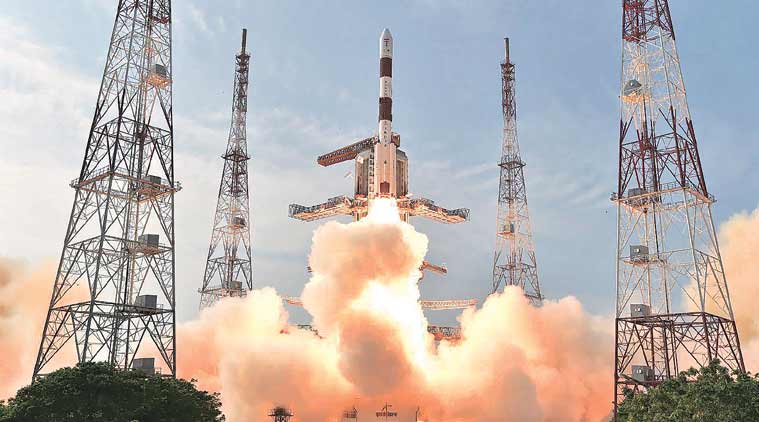
Why in news?
- Recently, PM Modi laid the foundation stone of the second rocket launchport of the ISRO at Kulasekarapattinam.
- It is situated at a geographically advantageous location in coastal Tamil Nadu’s Thoothukudi district.
- It will be extensively and exclusively used for commercial, on-demand, and small satellite launches in the future.
What’s in today’s article?
- Need for a new launchport
- Small Satellite Launch Vehicle (SSLV)
- News Summary
Need for a new launchport
- With the Union government’s recent policy announcing the opening of the space sector to private players, a sharp rise in the number of commercial launches is expected.
- To ensure that ISRO’s first launchport, the Satish Dhawan Space Centre (SDSC) SHAR in Sriharikota, is not overburdened with a high number of launches, the space agency has decided to build another facility.
- SHAR is situated along the east coast of Andhra Pradesh and is located 80 km off Chennai.
- It currently provides launch infrastructure to all ISRO missions.
- While SHAR will be only used for launching bigger and heavy-lift-off missions, the new launchport will be used to launch smaller payloads.
- SHAR will also be available for India’s big ticket missions to the Moon, Venus, and much touted human-flight mission, the Gaganyaan.
- Private players could develop space-qualified sub-systems, build satellites, and even launch vehicles using the new launchport.
- It will also facilitate dedicated launch infrastructure for all the on-demand commercial launches.
Small Satellite Launch Vehicle (SSLV)
- About
- SSLV is the new small satellite launch vehicle developed by ISRO to cater for the launch of small satellites.
- It has a three-stage launch vehicle, having a lift-off weight of about 120 tonnes and is 34 metres in length and 2 metres in diameter.
- SSLV is designed with a three-stage solid propulsion and a liquid propulsion stage, which is the terminal stage.
- Uses
- The SSLV missions are useful to launch small-sized satellites weighing anywhere between 10 to 500kg into the Low Earth Orbit.
- Going by their size and weight, these are typically referred to as mini, micro or nano satellites.
- They are low on cost and intended satellite insertion into orbits takes a shorter flight time.
- SSLV are best suited for commercial and on-demand launches.
- Previously, satellite projects built by college students and private players involved in the space sector have benefitted from SSLV missions.
- India’s journey towards SSLV
- The first SSLV mission — SSLV-D1 — carrying two satellites, including EOS-02 and AzaadiSat, in August 2022, was a failure.
- The insertion of the two satellites after their separation took place into a 356 km circular orbit instead of the intended elliptical orbit.
- In its second attempt with the SSLV-D2 in February 2023, ISRO tasted success.
- The rocket inserted three satellites onboard into the intended 450 km circular orbit following a 15 minute flight.
News Summary: Why is the new launch port located in Tamil Nadu?
- Natural advantage to ISRO’s future launches pertaining to SSLV
- The Kulasekarapattinam launchport provides a natural advantage to ISRO’s future launches pertaining to the SSLV.
- Allowing a direct southward and smaller launch trajectory for the light weight SSLVs carrying less fuel, the new facility will boost ISRO’s attempts to enhance payload capacities.
- Currently launch from existing SHAR facility follow a longer trajectory
- Currently, the trajectory followed by all launches from SHAR are longer as they follow a path.
- This requires the vehicle to skirt eastwards around Sri Lanka before taking the actual southward flight. This consumes additional fuel.
- However, the same would not be required for future launches from Kulasekarapattinam.
- This is because Kulasekarapattinam is geographically located several kilometers to the west of Colombo.
- Located near equator
- Both the launchports (SHAR and the new facility) are located on Southern India, near the equator.
- For a launch site close to equator the magnitude of the velocity imparted due to Earth’s rotation is about 450 m/s.
- This can lead to substantial increase in the payload for a given launch vehicle.
- Geostationary satellites must necessarily be in the equatorial plane. So, for such satellites, closer the launch site is to the equator the better it is.
Resource Classification Code: Industry Awaits Shift to JORC from UNFC

Why in News?
- In a bid to spur private investment in India’s mining sector, representatives of Vedanta Group pushed the Mines Ministry to shift to an investor friendly resource classification code.
- The representatives asked the ministry to consider the adoption of Joint Ore Reserve Committee (JORC) classification, as opposed to the currently used United Nations Framework Classification (UNFC).
What’s in Today’s Article?
- Need for a Resource Classification Code and a Shift to JORC
- What is the UN Framework Classification for Resources (UNFC)?
- Comparing UNFC and JORC
- Significance of IMIC/JORC
Need for a Resource Classification Code and a Shift to JORC:
- It is necessary –
- To assess resources and reserves in a mineral block,
- To prepare geological reports to facilitate its auction for both exploration and mining, and
- For a mining company to evaluate its assets.
- Between FY19 and FY23, the mining industry recorded foreign direct investment (FDI) in equity valuing $1.1 billion, just 0.4% of gross equity inflows worth $259 billion.
- According to experts, India’s current resource classification rules based on the UNFC –
- Have made the prospect of mineral exploration unattractive to private companies,
- As it fails to provide any degree of economic certainty,
- Which in turn has hindered the flow of private investment in the sector.
- Experts point out that India’s mining industry has already developed and recommended the Indian Mineral Industry Code (IMIC) in 2019, which is based on the same template as the JORC
- However, the ministry is yet to formulate rules in line with the IMIC despite informal assurances.
- Both the IMIC and the JORC classification are aligned with the Committee for Mineral Reserves International Reporting Standards (CRIRSCO).
- Globally, CRIRSCO consists of 15 members including the USA, Australia, Brazil, Canada, Chile, South Africa, and the European Union.
- Membership to CRIRSCO requires countries to produce reporting codes that comply with the CRIRSCO template.
- India was admitted to CRIRSCO in 2019 following the recognition of the IMIC as a CRIRSCO-compliant code.
What is the UN Framework Classification for Resources (UNFC)?
- UNFC is an international scheme for the classification, management and reporting of energy, mineral, and raw material resources.
- The UN Economic Commission for Europe’s (UNECE) Expert Group on Resource Management (EGRM) is responsible for the development, promotion and further development of UNFC.
- UNFC applies to energy resources including oil and gas; renewable energy; nuclear energy; minerals; injection projects for the geological storage of CO2; groundwater; etc.
- UNFC, in its core principles, encompasses the holistic management of all socio-economical, technological and uncertainty aspects of energy and mineral projects.
- UNFC aims to provide clear and consistent specifications, guidelines and best practices for all energy and mineral sectors.
- As a unique tool for harmonising policy framework, government oversight, industry business process and efficient capital allocation, UNFC is capable of managing the natural resources for realising the objectives on SDGs.
Comparing UNFC and JORC:
- JORC Code, developed by mining experts in Australia, is a professional code of practice that promotes robust standards for the public reporting of exploration results, mineral resources and ore reserves.
- Similarity between UNFC and JORC: Proved Mineral (Ore) Reserves has almost the same meaning.
- Differences between UNFC and JORC:
- Intent: JORC Code is a required minimum standard for Public Reporting. UNFC is to harmonise various standards existing in countries, to facilitate international communication.
- Unlike UNFC, JORC mandates disclosures pertaining to the economic viability of mining exploration projects.
- Content: While UNFC introduces the concepts of every class of the resources and reserves, JORC also specifies what kind of report or reporting should be done for public investment.
- Implement: JORC Code is adopted by professional society. UNFC is a reference for countries who want to make international communication.
Significance of IMIC/JORC:
- Unlike other sectors, the mining sector deals with natural processes, the knowledge of which remains incomplete prior to the commencement of mineral extraction.
- It is critical for the Indian mineral sector to communicate effectively and transparently with the investment community, which are essential to earn their trust.
- This should be done using internationally accepted terminology and definitions, which is incorporated in the IMIC.
- While the UNFC framework allows for the reporting of resources in general, the IMIC and the JORC classification, indicate the likelihood of profitably mining a mineral block at the time of reporting.






